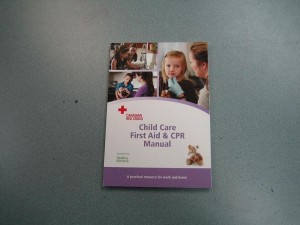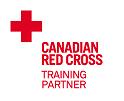Seeing a child injured in an accident is truly heart-breaking. And yet, around 25,500 children are hospitalized and some 390 children die each year due to accidents. This makes childhood injuries the leading health risk for children under 14. Many of these childhood injuries are actually preventable. Awareness of these hazards can help prevent accidents and the risk for devastating injuries or death. Taking a first aid training course is a great step in increasing awareness of parents. These courses actually serve two purposes: teach you how to respond in emergencies and how to prevent them.

Safety should be a regular part of your family’s daily routine. Teaching your child safe practices, such as using car seat belt or wearing a helmet while biking, and reinforcing them can greatly minimize the risk of accidents occurring to your children.
In this three-part series, we will discuss the 15 leading causes of accidents and injuries in children and how you can prevent them.
Motor Vehicle Accidents
Motor vehicle accidents are the leading cause of hospitalization and death in children below 14 years of age. Safe Kids Canada noted that only 25 percent use actually recommended booster seats for children between ages of 4-9 years, which puts them at increased risk in car crashes. Moreover, around 80 percent of child seats inspected are not properly installed. Car crashes account for 360 serious injuries and 35 deaths for children between 4-9 years recorded each year.
At their early age, teach your children to buckle up every time they are in the car. As much as possible, children under 12 should be seated at the back seat and properly buckled up. Make sure to use and install the appropriate booster seat for your child’s age, weight, and height.
Choking
Foods, such as nuts, raw carrots, and popcorn, are among the most common causes of choking (foreign body airway obstruction) in children. Toys that are inappropriate for the child’s age also pose great risk for choking. Many parents assume that their children are old or smart enough to play with toys approved for older children. In addition, broken balloon are also deadly if they get lodged in a child’s airways.
Make sure to choose age-appropriate toys for your children. You can also test toys by passing them through the tissue role; toys that can pass through it pose choking risks. Never leave young children unsupervised while eating. Round and heard foods should be cut or grated into thin strips. Make sure the child sits up while eating. Take a first aid course to learn how to respond in choking emergencies.
Drowning
The second leading cause of death for toddlers is drowning. Majority of drowning accidents occur at swimming pools, although it can also occur at home. Drowning at home can be due to the use of bath seats. These seats can give a false sense of security that the child can be left alone while taking a bath. But it can easily topple over and can cause the child to fall in the water.
Make sure children wear a life jacket and are not left alone around the swimming poll. Contrary to what many parents think, you will not hear the child screaming or calling for help while they are drowning. Actually, drowning is a silent killer.
Road Accidents
Road accidents most commonly involve children between 5 to 9 years. Around 56 children die and 780 children require hospitalization due to severe injuries that often leads to serious complications. Boys are more prone to these accidents because they tend to be more encouraged to participate in risky activities than girls. Moreover, children tend to be impulsive and will dash through the road without thinking of the risks.
Children younger than nine years should not be allowed to cross the street by themselves. Always hold the child’s hand when walking on crosswalks or streets. While teaching children crosswalk and traffic signals is good, children should be taught not to entirely rely on it, instead how to make safe decisions.
Falls
Falls can occur anywhere, at home, in playgrounds, at school. Every year, thousands of children are brought to the emergency department due to fall-related injuries. Head injuries due to falls are common in children because their head are relatively heavier than their bodies.
Make sure to have a wall-mounted baby gate at your stairs. Installing window-guard bars can also help prevent falls from the window. Do not put baby carrier on a high surface such as tables or counter; movement of the babies can cause the carrier to fall off.

